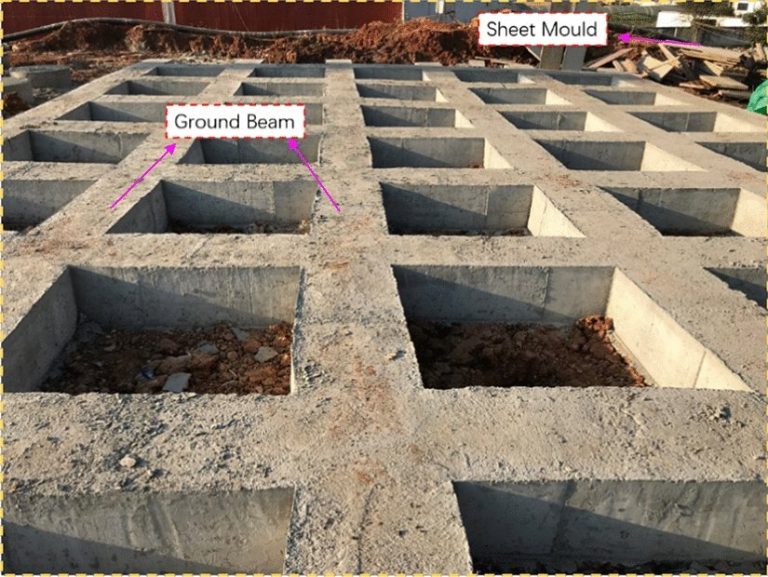
A building’s foundation is its most critical structural element — the unseen powerhouse that determines how well it withstands time, weight, and environmental forces. When it comes to designing strong and stable foundations, engineers often rely on advanced structural components like T Beam and H piles. These two elements play a vital role in distributing loads, minimizing settlement, and reinforcing overall structural integrity.
Understanding how they work together provides valuable insight into modern construction and why they’re essential in building foundations that stand the test of time.
1. The Role of a Strong Foundation
The primary purpose of a foundation is to transfer the weight of a structure evenly to the ground beneath. Without proper support, buildings can suffer from cracking, uneven settling, and even collapse. That’s why engineers incorporate high-performance materials and designs that enhance strength, stability, and longevity — especially for large buildings, bridges, and industrial structures.
T beams and H piles are two of the most effective solutions in this regard, offering exceptional performance in both load-bearing and soil stabilization.
2. Understanding T Beams
2.1 What Is a T Beam?
A T beam (or Tee beam) is a reinforced concrete beam with a cross-section shaped like the letter “T.” It combines a vertical web (the stem) and a horizontal flange at the top. The flange acts as a compression member, while the stem resists bending and shear forces.
This design allows T beams to carry greater loads over longer spans compared to standard rectangular beams. They’re widely used in floors, bridges, and other structural systems where bending resistance is crucial.
2.2 Advantages of Using T Beams
- Higher Load Capacity: The T shape efficiently distributes loads, reducing stress on the beam’s lower sections.
- Material Efficiency: The design minimizes the amount of concrete and steel required, making it cost-effective.
- Longer Span Capability: T beams can bridge wider gaps without intermediate supports.
- Improved Structural Rigidity: The combined flange and stem provide excellent bending resistance, enhancing overall stiffness.
3. Understanding H Piles
3.1 What Are H Piles?
H piles are deep foundation elements shaped like the letter “H.” Typically made from high-strength steel, they’re driven deep into the ground to transfer structural loads to stronger soil or rock layers below the surface.
Each pile functions like a column beneath the ground, carrying loads vertically and providing lateral stability to prevent shifting or settlement.
3.2 Key Benefits of H Piles
- Deep Load Transfer: H piles reach stable strata below weak or loose soil, ensuring solid support.
- High Strength-to-Weight Ratio: Their steel composition offers exceptional strength without excessive weight.
- Resistance to Buckling: The symmetrical “H” design gives uniform strength in both axes, enhancing stability.
- Versatility: Suitable for various soil conditions, including dense gravel, clay, and sandy terrains.
4. How T Beams and H Piles Work Together
When combined, T beams and H piles create a powerful foundation system that supports heavy structural loads efficiently.
4.1 Load Distribution
H piles transfer the building’s vertical loads deep into the ground, bypassing weak upper soil layers. Meanwhile, T beams distribute the loads evenly across the pile caps and structural elements above. This combination ensures that both vertical and lateral forces are well managed.
4.2 Reduced Settlement
Settlement occurs when the soil beneath a building compresses under weight. The deep anchoring of H piles minimizes this risk, while T beams distribute the load to prevent concentrated pressure points. Together, they significantly reduce differential settlement — a major cause of structural damage.
4.3 Enhanced Structural Integrity
Using T beams with H piles ensures that a foundation can resist not only vertical loads but also lateral forces from wind, earthquakes, or shifting soil. This makes the system especially effective for high-rise buildings, bridges, and heavy industrial structures.
5. Applications in Modern Construction
T beams and H piles are used across a variety of construction projects, including:
- Bridges and Overpasses: To support long spans and heavy traffic loads.
- High-Rise Buildings: Providing deep anchorage and stability on weak or variable soils.
- Industrial Complexes: Supporting heavy machinery and equipment loads.
- Marine Structures: Offering resistance against water pressure and shifting seabeds.
These applications highlight the adaptability and reliability of T beams and H piles in both urban and challenging environments.
6. Long-Term Benefits for Structural Stability
6.1 Durability
Both T beams and H piles are designed for longevity. The reinforced concrete in T beams resists corrosion and cracking, while steel H piles can be coated or galvanized for protection against rust and chemical reactions in the soil.
6.2 Cost-Effectiveness
Although the initial installation cost may be higher than shallow foundations, the long-term benefits — including reduced maintenance and enhanced safety — make them more economical over the lifespan of the structure.
6.3 Sustainability
With advances in construction technology, many projects now use recycled steel for H piles and eco-friendly concrete mixes for T beams, aligning with sustainable building practices.
7. Why Engineers Rely on T Beams and H Piles
For engineers, these two components represent reliability and efficiency. T beams provide the horizontal stability needed to manage bending stresses, while H piles ensure the foundation remains firmly anchored in the earth. Their complementary strengths allow for safer designs and more ambitious architectural projects.
This synergy between surface and subsurface support is what allows modern skyscrapers, bridges, and large-scale facilities to achieve both strength and durability — even in demanding environments.
Conclusion
Strong foundations are the cornerstone of any enduring structure. By combining advanced materials and intelligent design, T Beam and H piles deliver the stability, balance, and load-bearing capacity required for modern construction.
Their ability to work together — one distributing surface loads, the other providing deep-ground anchorage — makes them indispensable in building safe, efficient, and long-lasting structures. As construction technology evolves, these foundational elements continue to stand as timeless examples of engineering excellence.






